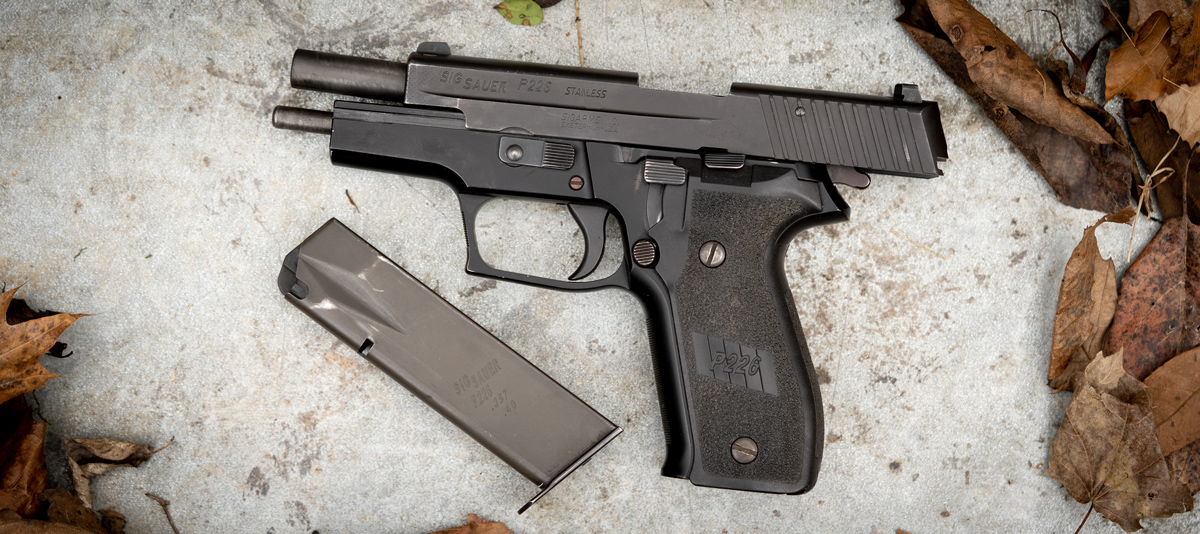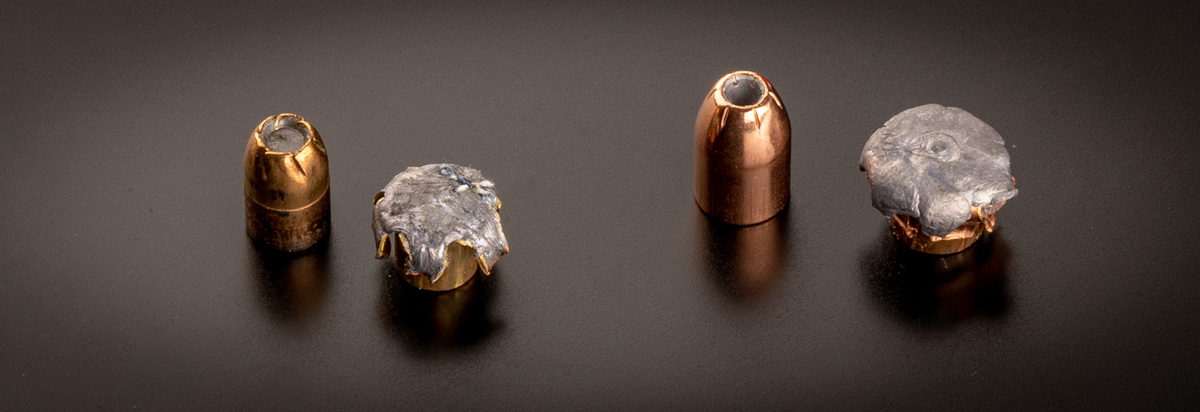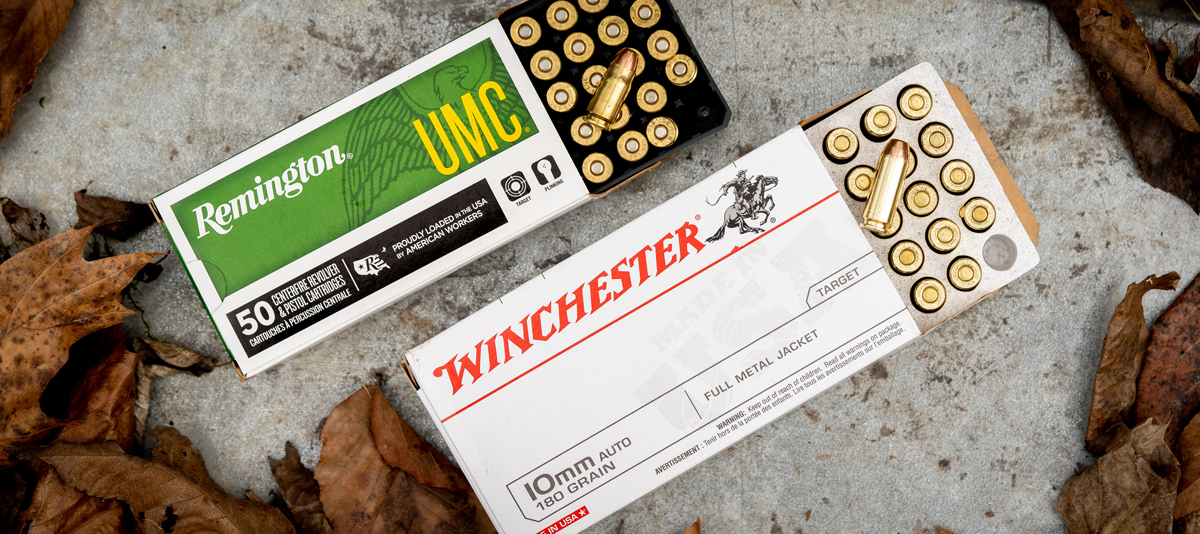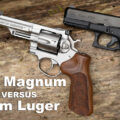A pistol caliber comparison weighing the benefits of the 10mm versus the 357 Sig cartridge.
Looking for a reliable handgun cartridge; one that is both powerful and fast, but also unique at the range? If you’ve determined some of the more prevalent calibers aren’t your style, you might find yourself weighing the virtues of 10mm vs. 357 Sig. While these two aren’t extremely common, they are two trustworthy cartridges that deliver the type of versatile performance you expect.
About the 10mm Auto

The 10mm Auto was once one of the most popular and promising rounds in the country. While it still has a loyal following among handgun owners, overall it’s not one of the most common cartridges at the gun range. Although other cartridges have risen to greater mainstream success, the 10mm Auto remains, without a doubt, one of the most effective cartridges for hunting, target shooting, and personal defense.
Released in 1983, the Federal Bureau of Investigation loaded it in their service pistols at one point. However, it was deemed too excessive with recoil and its pistols were thought to be too large for many users. It did, however, experience brief commercial success thanks in large part to the Bren Ten pistol, a semiautomatic pistol that was featured in the hit show Miami Vice.
The cartridge carries bullets ranging from roughly 150 to 200 grains, and is known for its reliable speed and stellar energy output.
10mm Auto Quick Facts:
• Released: 1983
• Bullet Diameter: .4 inches
• Base Diameter: .425 inches
• Neck Diameter: .423 inches
• Case Length: .992 inches
• Overall Length: 1.26 inches
• Designed specifically for semiautomatic pistols
About the .357 SIG
The .357 SIG is one of the most accurate and reliable pistol cartridges available. Used for a variety of purposes, this cartridge was designed to duplicate the performance of a .357 Magnum while being loaded into a semiautomatic firearm instead of a revolver. This would increase load capacity for law enforcement and self defense.
The standard bullet size for the .357 SIG is 125 grains, but there are products over 140 grains available. The .357 SIG remains one of the most accurate handgun cartridges available, but it has not achieved the outstanding commercial success of the 9mm Auto. Despite less use than other cartridges, the .357 SIG is a fast, accurate, and powerful cartridge that can be used for target shooting, personal defense, and even hunting.
.357 SIG Quick Facts:
• Released: 1994
• Bullet Diameter: .355 inches
• Base Diameter: .424 inches
• Neck Diameter: .381 inches
• Case Length: .885
• Overall Length: 1.14 inches
• Designed specifically for semiautomatic pistols
10mm vs .357 SIG
| 10mm | 357 Sig | |
|---|---|---|
| Release Year | 1983 | 1994 |
| Bullet Diameter | .4 inches | .355 inches |
| Base Diameter | .425 inches | .424 inches |
| Neck Diameter | .423 inches | .381 inches |
| Case Length | .992 inches | .885 inches |
| Overall Length | 1.26 inches | 1.14 inches |
| Typical Firearm | Semiauto Pistol | Semiauto Pistol |
Price Comparison
Although pricing should not be the only concern in your cartridge selection, we understand that everyone needs to keep costs as low as possible.
Both the 10mm Auto and the .357 SIG are fairly close in pricing, and neither is a particularly expensive round. Looking at the prices listed on our site when this article was written, we see that the lowest-cost 10mm Auto product was only $0.33 per round, while the lowest .357 SIG was $0.35. A difference of two cents per shot won’t drive the decision for most gun owners.
If we look at similar products from the same manufacturer, we see various results.
For example, the Hornady’s 10mm 180-grain XTP is priced at $1.20 per round, while the .357 SIG 147-grain XTP is only $0.95 per round.
On the other hand, Prvi Partizan’s FPJ (Flat Point Jacket; basically a FMJ round with a flat nose) is available in 170-grain 10mm Auto and 125-grain .357 SIGs. The 10mm is priced at $0.33 per round, while the .357 SIG comes in at $0.41 per round.
We could continue price comparisons endlessly, but the overall point is simple: there is a lot of overlap in pricing and neither one tends to have a significant advantage.
After one category, we haven’t helped you much. We’re calling price a “tie.”
Winner: Draw
Velocity Comparison: 10mm vs .357 Sig
Speed makes a large difference in how a cartridge performs, and it will impact trajectory, energy, and terminal performance. One again, we see a variety of overlap, and comparing similar products shows this variation.
Let’s look at the two Hornady XTP products we mentioned above (180-grain 10mm, 147-grain .357 SIG). The 10mm has a muzzle velocity of 1,275 feet-per-second (fps), while the .357 SIG’s muzzle speed is 1,225 fps.
For the Prvi Partizan products (FPJ rounds; 170-grain 10mm Auto, 125-grain .357 SIG), we see a reversal. In this case, the results are very different. The 10mmm Auto has a muzzle speed of 1,115 fps, while the lighter .357 SIG comes out at 1,541 fps.
Generally, the .357 SIG has a smaller bullet. Because of this, we can say that it will usually have faster speeds than the 10mm Auto.
Winner: .357 SIG
Muzzle Energy Comparison
While the .357 SIG often has superior numbers in speed, the 10mm tends to have a slight advantage in muzzle energy. Sticking with the products we referenced above, we see the 10mm Hornady XTP has a muzzle energy of 650 foot-pounds (ft-lbs), while the .357 SIG XTP has a muzzle energy of 490 ft-lbs. For these specific cartridges, the 10mm Auto had a slight advantage in speed but a clear advantage in energy.
Even when the bullet size is closer, the 10mm Auto usually wins for muzzle energy. The 155-grain 10mm Auto XTP and the 147-grain .357 SIG XTP, both from Hornady, show this difference. The 10mm has a muzzle energy of 684 ft-lbs, while the .357 SIG, as we cited earlier, sits at 490 ft-lbs.
Winner: 10mm Auto
Carrying & Load Capacity
Shot capacity is largely dependent on the firearm itself, but the specific cartridge does play a role. If you are concerned with having multiple shots from a single firearm, you will generally find that both offer respectable load numbers. For both the 10mm and 357 Sig, you will find firearms that can load from 10 to 15 rounds, and neither is capable of carrying far more than the other.
Winner: Draw
10mm Recoil vs. 357 Sig
Recoil, or the force that drives back into your hands when you shoot, is an important part of handgun cartridge selection. Smaller, weaker, and less-experienced handgun users should generally start with a round that gives you less recoil, which in this case is (usually) the .357 SIG.
The 10mm Auto was, in fact, decommissioned by the FBI because it had too much recoil, so it may not be an ideal choice if you are just learning to handle, carry, and shoot a handgun.
Winner: .357 SIG
Caliber Comparison Takeaway
Choose 10mm for Power, .357 SIG for Speed / Recoil
| Winning Caliber | |
|---|---|
| Price | Draw |
| Velocity | 357 Sig |
| Energy | 10mm Auto |
| Load Capacity | Draw |
| Recoil | 357 Sig |
If you are concerned with greater stopping power and superior terminal ballistics, then the 10mm Auto may be right for you. However, the .357 SIG, with its light recoil and higher muzzle speeds, may be a better option for inexperienced and even novice shooters.
No matter which cartridge is right for you, you’ll find affordable ammunition when shopping at ammotogo.com.









